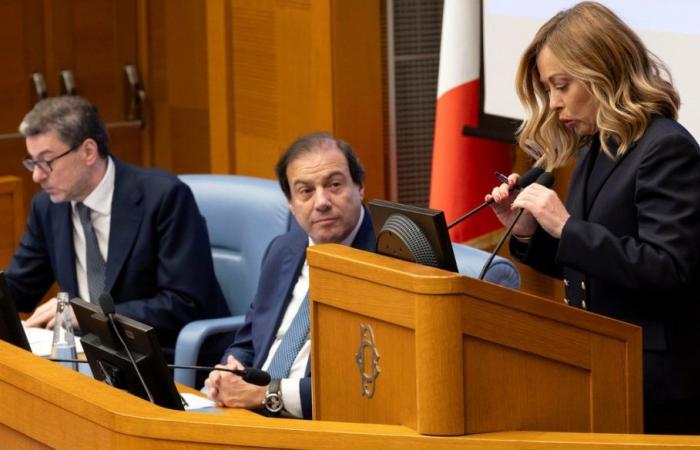The Meloni government has reiterated several times that in 2025 it will confirm the current system ofIrpef at three rates and tax relief for incomes up to 35 thousand euros. However, the recent infringement procedure initiated by Brussels due to an excessive deficit and the new rules of the reformed Stability Pact complicate the path towards the next Budget law more than expected.
Where to find the money to cut the tax wedge
In the Economics and Finance Document, it is expected that i 4.3 billion less revenue, due to the adoption of the three-rate Irpef this year, can be compensated for 3.8 billion in 2025 through the fund for the implementation of the fiscal delegation.
The merging of the first two brackets with arate of 23% for incomes up to 28 thousand euros, together with the reduction of the rates from four to three, it represents one of the salient aspects of the enabling tax law. Regarding the confirmation of the three Irpef rates for 2025, Maurizio Leo, deputy minister of economy and finance, specified: “The fund already exists, there will be a differential, but I think it can be filled also by considering the possible interventions with the biennial preventive agreement”.
Economy Minister Giorgetti is currently working on one measure which provides for a 7% cut in social security contributions for incomes up to 25 thousand euros and 6% for those up to 35 thousand euros, financed for just one year. This represents the real objective we set ourselves while defining the structural program.
By September 20, the government, on the basis of the “technical trajectory” that will be defined by Brussels, will have to develop a multi-year plan to contain primary current expenditure and transfer the programmatic commitments into the Budget law to be presented to Parliament in October. At this stage it will be crucial to indicate the sources of financing necessary to confirm the cut in the contribution wedge for next year too. The central theme remains: Where will the necessary resources be found?
In this context it is essential to remember that the 2024 maneuver was financed with a deficit of 15.7 billion euros, the last chance granted thanks to the suspension of the Stability Pact decided at European level in 2020 due to the Covid-19 pandemic.
Estimates on the 2025 budget
At the same time, the first estimates for the 2025 budget arrive, which start from one base of 20 billion euros: around 18 billion will be needed to maintain some of the measures financed only for this year in 2025, but over 20 billion if we also want to add other expenses usually included in consolidated policies, such as the renewal of public employment contracts. It was L. who made these assessments‘Parliamentary Budget Office, who also issued a warning about one of the measures already considered certain by the government: the extension of the contribution wedge cut. If this measure becomes structural, warns the PBO, it could create a “poverty trap” close to the income thresholds of 25,000 and 35,000 euros.
The annual report on the budgetary policy of the Public Accounts Authority was presented on 19 June, coinciding with the day on which Europe started a excessive deficit procedure against Italy, together with France and five other countries. According to PBO estimates, the adjustment required for Italy is approximately 0.5-0.6 points of GDP per year, equal to approximately 10 billion euros over a seven-year period. This correction is already foreseen in the Economic and Financial Document (Def), but the rebalancing path aimed at reducing a debt that continues to represent a vulnerability for the national economy will also lead to limitations in the ability to undertake deficit interventions, warns the president Lilia Cavallari.
In the next maneuver, the PBO predicts an impact on the deficit of at least 18 billion euros, of which 10.8 billion will derive only from the cut in the contribution wedge. The decontribution itself was analyzed by the Authority, which recognized its positive impact but highlighted a distortion on the marginal rates.






